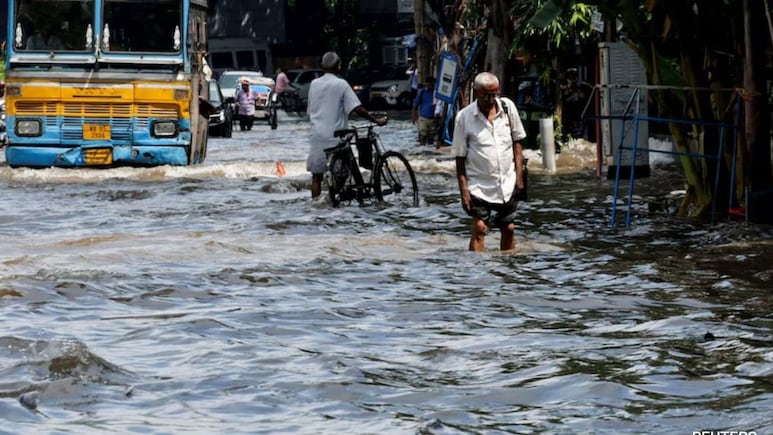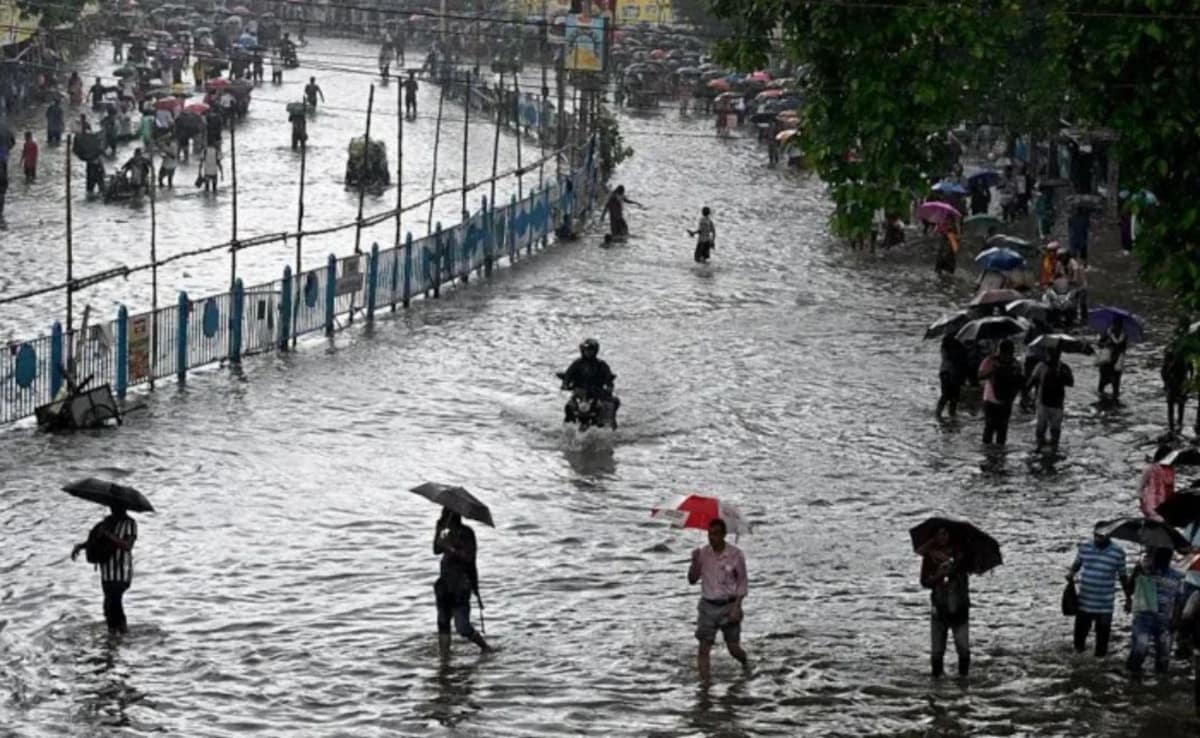
- At least 10 people died, nine from electrocution, during the heavy rainfall in Kolkata
- Indian Ocean warming drives intense rainfall, cyclones, and disrupted monsoons
- Extreme Indian Ocean Dipole events may rise by 66% by 2100, affecting weather patterns
As Kolkata begins to mop up after one of its worst deluges in recent memory, scientists warn that such extreme weather events are no longer anomalies - they are becoming the new normal.
Between Monday night and Tuesday morning this week, Kolkata recorded a staggering 251.4 mm of rainfall within 24 hours, as per the India Meteorological Department (IMD) making it the city's wettest day since 1986 and the sixth-highest single-day rainfall in the region in 137 years.
At least 10 people were killed, nine of them due to electrocution, in Kolkata and adjoining districts.
The rainfall peaked between 3:00 am and 4:00 am on September 23, recording 98 mm in a single hour, just shy of the 100 mm threshold required to classify the event as a cloudburst. Meteorologists described the rainfall as extremely intense, unusual, and linked to broader climatic shifts.
According to the IMD, the rains were triggered by a low-pressure system that formed on the morning of September 22 over northwest Bay of Bengal, moving inland toward Gangetic West Bengal and adjoining Odisha by the next day. This system led to sustained moisture convergence over Kolkata and its surrounding areas, resulting in the heavy downpour.

Kolkata recorded a staggering 251.4 mm of rainfall within 24 hours, as per IMD data. Photo Credit: AFP
Experts Warn Of Climate Change Link
Experts have attributed this extreme rainfall to changing climate patterns, particularly the rapid warming of the Indian Ocean.
"This spell of rainfall is very rare. A persistent low-pressure system over Odisha allowed intense convective cloud formation. Continuous moisture incursion from the Bay of Bengal fed the clouds, keeping them energized for longer than usual," said Mahesh Palawat, Vice President of Meteorology and Climate Change at Skymet Weather.
He further pointed to the warming of the Bay of Bengal, which has been experiencing unusually high sea surface temperatures due to global warming, leading to higher evaporation rates and more intense weather systems.
Global Ocean Warming Driving Weather Extremes
Renowned climate scientist Dr Raghu Murtugudde, Emeritus Professor at the University of Maryland and retired professor from IIT-Mumbai, drawing links between oceanic warming trends and erratic monsoon behavior in India, said that the monsoon cycle has been disrupted because of the multiple typhoons being formed in the Pacific due to global warming.

Experts have attributed this extreme rainfall to changing climate patterns. Photo Credit: Reuters
"Multiple typhoons are forming in the Pacific due to warming, and these massive systems draw in moisture from the North Indian Ocean. This disrupts monsoon circulation and encourages the development of low-pressure systems in the Bay of Bengal," Dr Murtugudde said.
He warned that such interactions are delaying the monsoon withdrawal, likely resulting in extended rains in cities like Kolkata and Mumbai.
Indian Ocean Warming: A Climate Hotspot
Recent scientific research shows the Indian Ocean's role as a key driver of global climate variability, with its surface warming at the fastest rate among major oceans since the 1950s. According to a study published in Nature, ocean temperatures have risen by more than 1.5°C since the industrial era began - higher than previously estimated.
Climate scientist Dr Roxy Mathew Koll from the Indian Institute of Tropical Meteorology (IITM), Pune, warns that this rapid ocean heating is intensifying cyclones, monsoons, and extreme rainfall events.

Marine heatwaves are expected to increase from 20 to 220-250 days per year. Photo Credit: Reuters
"By the end of this century, sea surface temperatures across the Indian Ocean are projected to remain above 28°C year-round, creating ideal conditions for deep convection and cyclogenesis. We've already seen a marked increase in heavy rainfall and severe cyclones since the 1950s, and this trend is only expected to accelerate," Dr Koll said.
He added that marine heatwaves - prolonged periods of abnormal sea temperature - are expected to increase from 20 to 220-250 days per year, potentially making the tropical Indian Ocean a near-permanent heatwave zone. These heatwaves not only intensify cyclones rapidly but also damage marine ecosystems, leading to coral bleaching and loss of biodiversity, with serious implications for fisheries and coastal communities.
Indian Ocean Dipole And Future Projections
Scientists also highlight changes in the Indian Ocean Dipole (IOD) - a key climate driver influencing monsoon variability and cyclone formation. Extreme IOD events are projected to increase by 66 per cent, while moderate events could decline by over 50 per cent by 2100, further disrupting weather patterns across South Asia.
A Wake-Up Call
The recent rains in Kolkata are not just an isolated incident but a stark reminder of how climate change is reshaping weather systems across the subcontinent. The incident highlights the need for climate-resilient urban infrastructure, improved disaster preparedness, and aggressive climate action, experts stress.
Track Latest News Live on NDTV.com and get news updates from India and around the world

